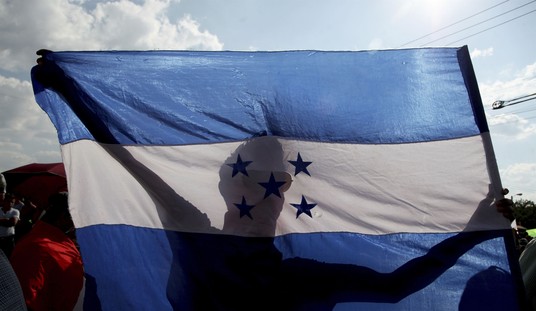Much recent media attention has focused on a series of statements from top al-Qaeda leaders saying that the powerful Jabhat al-Nusra militia in Syria is a franchise of the al-Qaeda global jihadi network.
The statements were made by the top al-Qaeda leader Ayman al-Zawahiri, al-Qaeda’s leader in Iraq Abu Bakr al-Baghdadi, and Jabhat al Nusra leader Abu Mohamed al-Julani.
Analysis of the public declarations by these three men indicates a degree of disagreement and competition between the Iraqi and Syrian elements of the al-Qaeda network. Al-Baghdadi announced that the franchises in Iraq and Syria were merging into a single entity — the “Islamic State of Iraq and al-Sham (Syria).” Julani’s statement appeared to reject this merger.
But tactical differences aside, the statements together do confirm beyond reasonable doubt: Jabhat al-Nusra is a part of al-Qaeda.
This is significant. Designated a terrorist organization by the United States, the fighters of Jabhat al-Nusra have emerged as the shock troops of the rebel side. While other Syrian rebel brigades remain, for the most par,t focused on a local area, the Nusra men engage country-wide, seeking out the areas of most intense combat.
The Syrian civil war offers the most important opportunity for al-Qaeda in the Middle East since the Sunni insurgency in Iraq.
The rebellion emerged from impoverished, devout Sunni rural areas. It is being conducted against a non-Sunni, self-proclaimed “secular” regime. This regime, in fact, represents the ascendancy of the Alawi minority in Syria, in close alliance with Shia Iran and its various proxies.
But the al-Qaeda affiliated Nusra front is only one element in a broader Sunni Islamist insurgency.
There are literally hundreds of rebel “brigades” operating across Syria. They range from local gatherings of a few hundred men, to formations of several thousand fighters.
Nevertheless, it is now possible to identify a number of coherent, Syria-wide rebel alliances, each with its own broad political orientation. All of them are Islamist. But they represent identifiable and familiar strands within this broader definition.
At the most extreme end is the aforementioned Jabhat al-Nusra, the Syrian branch of al-Qaeda. Providing strictly accurate figures for the size of this group is next to impossible. A recent study suggested that the group has around 6,000 fighters in Syria. This sounds plausible.
Alongside the Nusra front is another, larger Salafi alliance which has received insufficient media attention. This is the Syrian Islamic Front, founded in December 2012. It includes a number of affiliated units, but the dominant group is Ahrar al-Sham (Free Men of Syria). This organization emerged as one of the leading forces fighting the regime in Aleppo city. It now has branches across Syria. It is reputed to be the beneficiary of major assistance from foundations in Saudi Arabia.
Swedish researcher Aron Lund, one of the best informed voices on the Syrian opposition, recently published a major article on the Syrian Islamic Front. He characterized it as Salafi, but differing from al-Nusra in that it has no links with the global Al-Qaeda network.
Rather, it is more locally orientated, concerned with the establishment of a state based on Islamic Sharia law in Syria. The Syrian Islamic Front is reckoned to have around 13,000 fighters (once again, skepticism should be exercised regarding precise figures, but this is probably broadly accurate.)
A third, even larger alliance, established in September, 2012, brings together rebel units affiliated with Muslim Brotherhood style Sunni Islamism. This is the Syrian Islamic Liberation Front. It includes many of the best known fighting groups in Syria — such as the Farouq Brigade, formed in Homs, the Suqour al-Sham group from Idleb and the Tawhid Brigade of Aleppo. It is reckoned to have around 40,000 fighters.
There are myriad local initiatives which pledge allegiance to none of these alliances. But these are the key players.
Current US and Western policy seeks to centralize the flow of (largely Persian Gulf) aid to the rebels through the Supreme Military Council of General Salim Edriss. The US is also offering training to a select group of non-Salafi rebels, on Jordanian soil.
It is vital to understand that there are no large, secular fighting groups engaged on the ground alongside the Islamist alliances mentioned above. Rather, the bulk of the forces nominally aligned with the Western supported Supreme Military Council are those groups noted above as constituting the Syrian Islamic Liberation Front — that is, the Muslim Brotherhood type groups.
An important concern is the possibility that forces aligned with Nusra or the other Salafi groups could deploy on the border with Israel and begin Sunni jihadi attacks against Israel on the Golan Heights. Western policy appears to include a desire to install non-salafi fighters along the borders with Jordan and Israel to prevent this.
So the range of opinion among the fighting groups currently engaged against Assad in Syria stretches from al-Qaeda style Islamism to Muslim Brotherhood style Islamism. Western and Gulf policy is to back the Muslim Brotherhood type units.
This policy is moving ahead. But the level of support still seems far too low to effect a victory for these forces any time soon. Instead, the de facto fragmentation of Syria along ethnic, sectarian and religious lines looks set to continue apace.
In this regard, it is worth noting that there have already been instances of violence between Jabhat al-Nusra and the Muslim Brotherhood type units (specifically the Farouq Brigade.)
In contrast to the government controlled areas and the Kurdish controlled north-east, the rebel-controlled regions remain divided by factional interests. Increased internecine violence between the various strands of the Sunni insurgency is likely in the medium term.
Bottom line: Sunni Islamism is currently at war with Shia Iran and its allies on the territory of what was once Syria. The likely result: either eventual Sunni victory and the birth of a new Sunni Islamist powerhouse on the Mediterranean, or the long-term Balkanization and fragmentation of Syria.









Join the conversation as a VIP Member